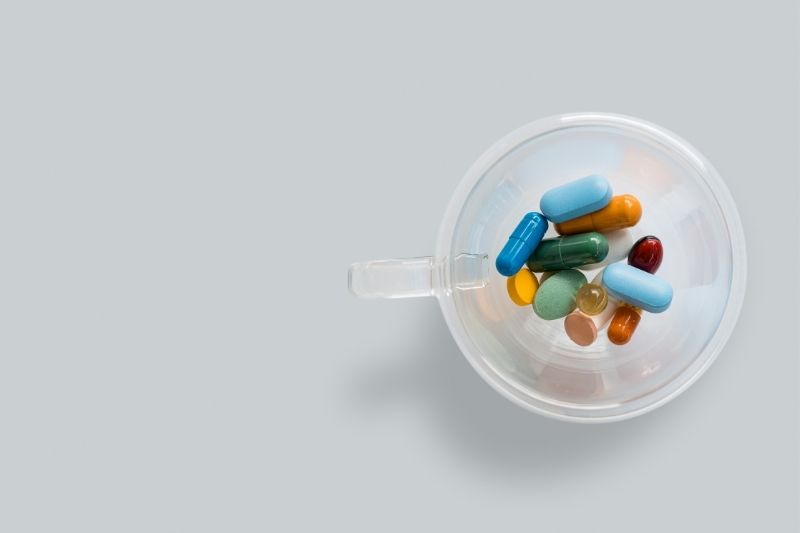The HealthTech industry is one of the fastest growing technology industries, rapid growth progress being made since the start of the Covid-19 pandemic. We’ve compiled a list of APAC HealthTech trends to look forward to in the coming years.
The Covid-19 pandemic has caused most of the global population to become more health conscious. From fitbits to blood pressure watches to DNA testing kits, the industry of HealthTech is paving multiple pathways for making health information more accessible. Here are some HealthTech trends in APAC to look out for.
MedTech
1. 3D Bioprinting
3D printing has been around for a couple of years now and is primarily used in manufacturing, but what if you could 3D print a viable organ? Bio-ink is the newest technique to revolutionize cell regeneration. Instead of the ordinary raw materials, like plastic, that are used in 3D printers, Bio-ink is the combination of cultured cells and biocompatible materials. Between 2020 and 2030, the 3D Bioprinting industry is expected to grow 21.4% in Asia Pacific regions alone, with a US$58.83 billion gain in revenue.
In November 2019, researchers at the Singapore Institute of Manufacturing Technology were able to create realistic coloration on printed samples by controlling melanin output. 3D Bioprinting also allows for a more accurate diagnosis of complicated fractures and deformations. In Australia a local research team has enabled a way to Bioprint bone-like structures, which can be the future of dental restoration, or even bone reconstruction for patients.
2. Nanomedicine
Only a couple of centuries ago, we discovered the molecular atoms that make up water, and now we are using nanoparticles to treat cancer. Nanomedicine is the use of nanoscale materials to diagnose diseases and deliver drugs to targeted tumors, among other functions. By 2025, nanomedicine will be worth up to US$48.24 billion in the Asia Pacific region alone. With this technology, scientists hope to be able to create nanomedicine that is able to guide a drug to a targeted region to treat cancer, HIV, and even diabetes. Scientists also have hopes that the future of nanomedicine will eventually allow the regeneration of cells to produce limbs and organs.

3. Genomics
Ever wonder why there are companies that can tell you what specific mix or breed your dog is? It’s all thanks to the study of Genomics, or genome sequencing. Since 1990, the Human Genome Project has been working with the goal of mapping the whole structure of the human genome sequence. Soon after, genomics expanded into creating DNA test kits to learn about a person’s medical risks and ancestral origins. DNA test kits provide long term health benefits through allowing a person to better understand their health, improving their personal clinical care and health outcomes. The advancement of genomics allows scientists to track the current Covid-19 virus via its genome, resulting in the quick discovery of a vaccine which manipulates and replicates its genetic sequence as a means to immunity development in a person.
Technology:
1. Telemedicine
Telemedicine is a means to receiving remote diagnosis and medication through phone calls, emails, mobile apps, and video chat; healthcare professionals can now treat patients remotely, without even having to step into a hospital or clinic. Telemedicine’s revenue is estimated to reach up to US$22.45 billion by 2025. Ping An Good Doctor, one of the largest telehealth companies in China, reported a 10x increase in newly registered users in their app after the emergence of Covid-19.
Since the start of the pandemic, more countries in the APAC region have started to adopt telemedicine. Multiple clinics and hospitals in Hong Kong also now offer phone and video consultations. The Australian government introduced Covid-19 Home Medicines Services, allowing vulnerable people to order prescriptions remotely without needing to visit a pharmacy. In Singapore, apps like Doctor World, HiDoc, and Mana DR, offer 24/7 video calls and live chats through WhatsApp.
Telemedicine not only is more accessible to patients and lowers the cost of healthcare services, but also benefits clinics by driving up efficiency and revenue by reducing the amount of no show patients, increasing patient flow, and attracting new patients through more platforms digitally. It also allows remote delivery of healthcare services which in turn allows hospitals to reserve, prioritise, and vacate beds for incoming intensive care patients. As more clinics, hospitals, and emerging HealthTech companies develop apps to gain more patients and make their services more accessible, telemedicine continues to make a positive and important contribution to the world of digital and remote healthcare.
2. Smart Cities
Apps like the Stayhomesafe app in Hong Kong, TraceTogether in Singapore and scanning QR codes on WeChat and Alipay to check for Covid-19 infections in China, are all driving points that have caused the increase in development of smart cities. In the future, wearable devices such as Apple Watch, Fitbit, and Samsung watch, can alert medical professionals to help patients with high blood pressure, diabetes, or are prone to heart attacks. In Hong Kong, insurance companies like AXA have launched BetterME, a wellness platform which offers a 20% premium rebate in individuals’ next policy, if they achieve a target number of steps. By April 2021, Singapore will launch the National Step Challenge, encouraging residents to wear a step tracker and diet to take responsibility for their health.

3. The Internet of Medical Things (IoMT)
Combining the Internet of Things (IoT) with telemedicine, The Internet of Medical Things (IoMT) is a network of medical devices and people who use wireless communication to exchange healthcare data. This involves using wearable devices and apps that allow patients to send health and personal information to their doctors remotely. In contrast with Telemedicine providing live services and physical goods, IoMT is the provision of healthcare services and information through the internet.
4. AI (Artificial Intelligence)
Artificial Intelligence (AI) HealthTech is expected to grow 52.68% by 2022. AI has been around for a long time and has greatly improved the medical world with AI-assisted robotic surgery, better diagnoses, drug discovery, and efficient workflow. Besides apps and wearable medical devices, AI services have expanded, including the invention of Medbots: patients in Guangdong General Hospital are now greeted by AI nurses. In the future, doctors are hoping to be able to perform surgery remotely through the use of drones and 5G technology.

5. Cloud Computing
The need to store a high volume of data such as medical history, demographics, laboratory results, and diagnoses at a lower cost is causing a tremendous growth in the industry of cloud computing. By 2024, there will be a 117% growth in the cloud market in the APAC region. Cloud computing allows medical centers and hospitals to cut costs, since it decreases the amount of computers, software, and hardware needed to store medical data. However, with cloud data storage systems like Apple’s iCloud, there are risks to inputting patient’s data. In February 2019, Singapore’s Ministry of Health (MOH) had a HIV patient data leak. One way to prevent data leaks is to find a secure cloud computing service.
Covid-19 has forced a lot of medical clinics and industries to migrate to digital platforms. As we move into the coming years, it’s expected that the HealthTech industry will continue to be more integrated into everyone’s lives. In the near future trends like personalised care, remote monitoring, and AI-integrated HealthTech will become the new normal.
x
Related Articles
8 Hong Kong HealthTech Startups to Watch in 2021





